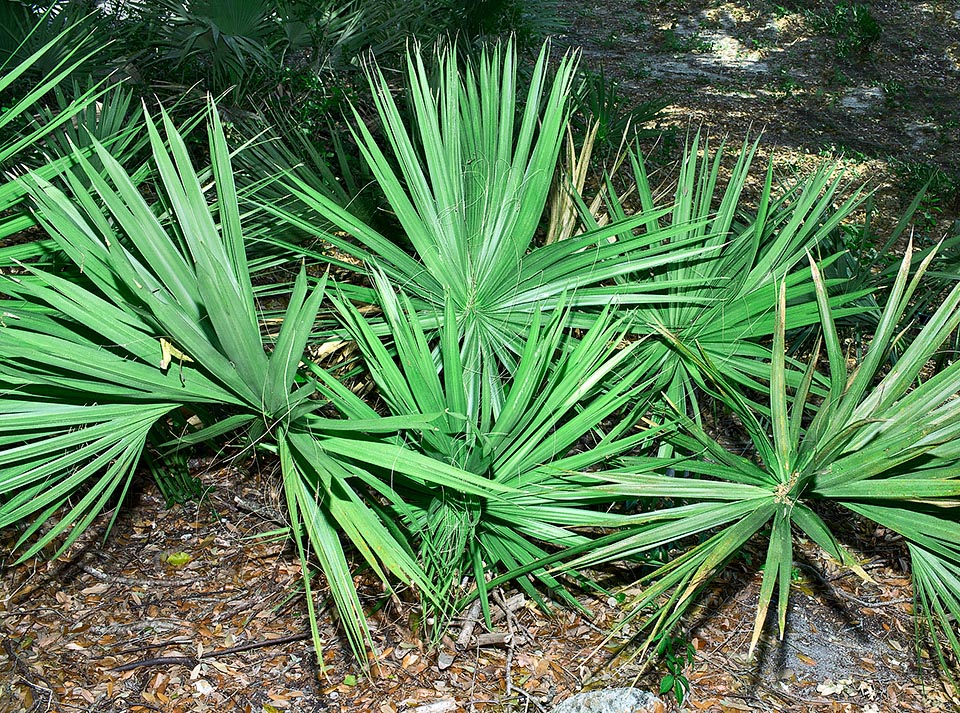Family : Arecaceae

Text © Pietro Puccio

English translation by Mario Beltramini
The species is native to central and southeastern Florida (USA) where it grows in the underwood of the coniferous and oak forests on sandy soils.
The etymology of the genus is unknown, having not been specified by the author, the French botanist Michel Adanson (1727-1806); the specific name refers to the site in Florida, Etonia, where the species type has been found.
Common names: corkscrew palmetto, Miami palmetto, scrub palmetto (English).
The Sabal etonia Swingle ex Nash (1896) is an unarmed monoecious species with solitary underground stem, rarely emerging up to about 2 m of height, more or less twisted, and rooting on all its lower part. The leaves, on a 0,3-0,5 m long and about 2 cm broad petiole with sharp margins, are strongly costapalmate, 0,4-0,6 m long, divided almost up to the base in 25-50 rigid linear segments with acuminate bifid apex, 1,5-3 cm broad, of yellowish green color, with long filaments departing from the base of the segments; triangular hastula (appendage located in the point of inserction of the foliar lamina with the petiole) with acute apex 1,5-3,5 cm long. Ascending inflorescences of less or same length as that of the leaves, compact, with 2, rarely 3, orders of ramifications and fragrant flowers, 5-6 mm long, of yellowish white color.

Native to Florida, the Sabal etonia has subterranean solitary stem, rarely emerging. A resistant soil cover, resisting drought and low temperatures © Giuseppe Mazza
Globose-depressed fruits, of 1,2-1,5 cm of diameter, blackish brown when ripe, containing only one globose-depressed seed, slightly concave, of 0,7-1 cm of diameter.
It reproduces by seed, previously kept in water for 3 days, in draining loam maintained humid at the temperature of 24-28 °C, with times of germination starting from 1-2 months.
Similar to Serenoa repens, from which differs due to the solitary posture, the costapalmate leaves and the margins of the petioles without spines, it would deserve a major diffusion in cultivation as soil cover, for borders and in desert type gardens due to its resistance to drought and adaptability to poor soils. It has a high resistance to the low temperatures, bearing values up to -10 °C, or little less if duly sheltered. It grows in full sun as well as in partial shade and even if preferring the deep sandy soils, adapts to various types of same, slightly acidic to alkaline, provided perfectly draining. It adapts well to the cultivation in pot for the decoration of open spaces or luminous interiors, as does not need particular cares.
Synonyms: Sabal adansonii var. megacarpa Chapm. (1897); Sabal megacarpa (Chapm.) Small (1903); Sabal miamiensis Zona (1985).
